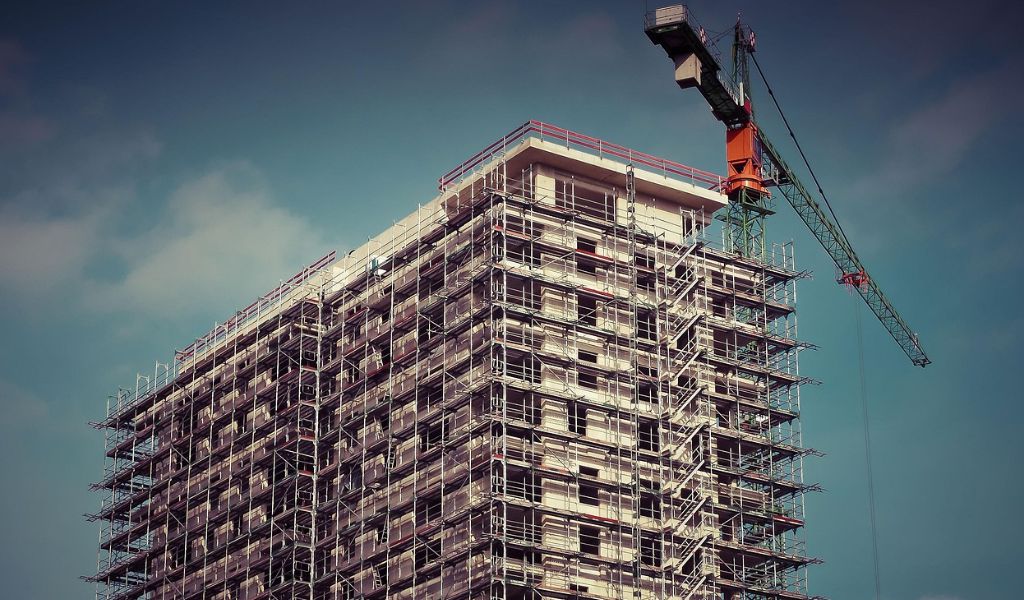Are Fabric Buildings The Future Of Sustainable Construction?
06 August 2025
5 Mins Read

- What Exactly Are Fabric Buildings?
- How Do They Differ From Traditional Construction?
- Why Fabric Buildings Are A Sustainability Game-Changer?
- 1. They Drastically Reduce Material Usage
- 2. They Slash Energy Consumption
- 3. They Minimize Construction Waste
- 4. They Are Relocatable And Reusable
- How Fabric Buildings Outperform Conventional Structures?
- 1. Faster Installation = Lower Costs
- 2. Surprising Durability
- 3. Unmatched Design Flexibility
- Real-World Applications: Where Fabric Buildings Excel
- 1. Agriculture And Farming
- 2. Sports And Recreation
- 3. Industrial And Commercial Use
- 4. Emergency And Humanitarian Aid
- The Future Of Fabric Buildings: What Is Next?
I absolutely love fabric buildings. You might recognize them by sleek, modern structures. Oh, they also have tensile fabric roofs billowing like sails against the skyline.
But fabric buildings aren’t just architectural eye candy. They’re spearheading a quiet revolution in sustainable construction.
These innovative structures are rapidly gaining traction across industries because they are:
- Lightweight
- Durable
- Energy-efficient
- Cost-effective
Additionally, these buildings are everywhere, from agriculture and sports facilities to disaster relief and industrial complexes.
So, are fabric buildings truly the future of green construction? Or are they just a niche solution for temporary needs?
Explore why these dynamic structures might just redefine how we build in the 21st century in the following sections.
What Exactly Are Fabric Buildings?
At their core, fabric buildings are tension-based structures composed of high-performance membranes.
Additionally, these are stretched over rigid frames made of steel, aluminum, or even timber.
Unlike conventional brick-and-mortar or steel-and-concrete buildings, they utilize advanced materials like:
- Polyvinyl chloride (PVC)-coated polyester is affordable, flexible, and resistant to ultraviolet (UV) rays;
- Polytetrafluoroethylene (PTFE) is extremely durable, fire-resistant, and long-lasting; and
- Ethylene tetrafluoroethylene (ETFE) is lightweight, self-cleaning, and highly transparent.
These aren’t glorified tents—they’re engineered for resilience, which makes them viable for both temporary and permanent applications.
How Do They Differ From Traditional Construction?
How do fabric buildings differ from conventional structures?
First, there are no heavy foundations needed. That means less site disruption and lower costs.
Fabric buildings are pre-engineered structures as well; they’re faster to assemble with minimal waste.
Furthermore, there are many top companies out there that offer modular fabric building solutions that you can look into.
Lastly, fabric structures have adaptable designs that you can easily:
- Expanded
- Relocated
- Repurposed
Why Fabric Buildings Are A Sustainability Game-Changer?
It’s said that the construction industry is one of the biggest contributors to global carbon emissions.
Moreover, Fabric buildings offer a compelling alternative by addressing multiple environmental concerns:
1. They Drastically Reduce Material Usage
Traditional buildings consume vast amounts of materials that are resource-intensive to produce, such as:
- Concrete
- Steel
- Lumber
Furthermore, Fabric structures, in contrast, require fewer raw materials, significantly lowering their carbon footprint.
2. They Slash Energy Consumption
Fabric structures have lower energy requirements. How do they do that?
Many fabric membranes allow diffused sunlight to penetrate, which reduces the need for artificial lighting.
Fabric buildings have great thermal efficiency as well. Insulated fabric systems and double-layered roofs help regulate indoor temperatures and cut ventilation costs.
Finally, some fabrics can integrate photovoltaic panels. That’s a great opportunity for roofs to turn into renewable energy sources.
3. They Minimize Construction Waste
It’s said that conventional construction generates massive waste. A considerable portion of all landfill content comes from building debris.
Fabric buildings, however, are largely prefabricated off-site. Now, what does this mean? Precision manufacturing reduces off-cuts and excess materials.
Also, we can reuse or recycle modular components when dismantled.
4. They Are Relocatable And Reusable
Unlike permanent structures, fabric buildings can be disassembled and moved. That makes them ideal for the following purposes: disaster relief housing, seasonal agricultural storage, and so on.
Fabric buildings’ reusability extends their lifecycle and prevents the ‘build-demolish-waste’ cycle of traditional construction.
How Fabric Buildings Outperform Conventional Structures?
Still think fabric means fragile? That and other myths surrounding fabric structures will be debunked below:
1. Faster Installation = Lower Costs
A traditional warehouse might take six to 12 months to build. However, a fabric structure can be up and running in weeks.
This speed translates to reduced labor expenses, better returns for businesses, as well as speedier emergency response in crises.
2. Surprising Durability
Fabric buildings are known for their high wind resistance (some are even designed to hold up against hurricanes).
Furthermore, they also have the ability to manage snow loads.
Additionally, their fire resistance (they meet strict fire codes imposed on those in the construction industry).
3. Unmatched Design Flexibility
Fabric structures have great design flexibility. They have:
- Clear-span interiors that allow for no obstructive columns, allowing maximum usable space.
- Custom shapes, from domes to hyperbolic curves, enable bold architectural statements.
- Scalability that permits the installation of more framework and membrane panels.
Real-World Applications: Where Fabric Buildings Excel
We can utilize the Fabric buildings across a broad spectrum of applications. It starts from the agriculture and farming industry to emergency and humanitarian missions.
1. Agriculture And Farming
We can use the fabric structures for the following purposes:
- Firstly, we can use them as livestock storage, thanks to their superb ventilation.
- Secondly, we can utilize them to store crops because we chiefly use the UV-blocking fabrics to make them.
- Thirdly, we can prop up the Fabric buildings to serve as equestrian arenas (they’re all-weather riding spaces with natural lighting).
2. Sports And Recreation
Fabric structures can be useful for sports and recreation. They can serve as
- Tennis bubbles (seasonal domes that extend playability year-round)
- Soccer stadiums (retractable roofs for open-air or covered events)
- Swimming pool enclosures.
3. Industrial And Commercial Use
We can set up fabric buildings to serve different commercial purposes. We can use them as convenient aircraft hangars because they’re lightweight yet strong enough to span massive areas.
Aside from that, you can use them for warehousing and manufacturing plants.
4. Emergency And Humanitarian Aid
We can use fabric structures in times of calamities and other public emergencies. Additionally, we can use them as field hospitals that we rapidly deploy in:
- Disaster zones
- Refugee housing units
These units have to be durable, weatherproof, and relocatable. Moreover, they have storage hubs for supplies during relief operations.
The Future Of Fabric Buildings: What Is Next?
Innovation in this space is accelerating. Here’s what’s on the horizon:
- Smart fabrics are on the rise. Moreover, experts are researching self-healing membranes and climate-responsive coatings.
- We can expect that the Energy-generating materials will be available soon. Those include solar-integrated fabrics with thin-film photovoltaic (PV) layers embedded in membranes along with thermo-regulating layers.
- We can also further the circular economy. That means the use of 100% recyclable materials and promotion of lease-and-return models so that other companies can reuse fabric components.
- Researchers are developing membranes based on plants. These will decompose safely. Talk about fewer materials ending up in the landfill.
The evidence is compelling. Fabric buildings offer a lot of things, including:
- Unrivaled sustainability
- Cost
- Time savings
While they won’t replace skyscrapers or residential homes anytime soon, fabric buildings are carving out a critical niche in eco-conscious construction.
As technology advances, their role will only grow, making them a cornerstone of sustainable development.
The future of construction isn’t just about building stronger. It’s about building smarter. And fabric structures are leading the charge.



















Comments Are Closed For This Article